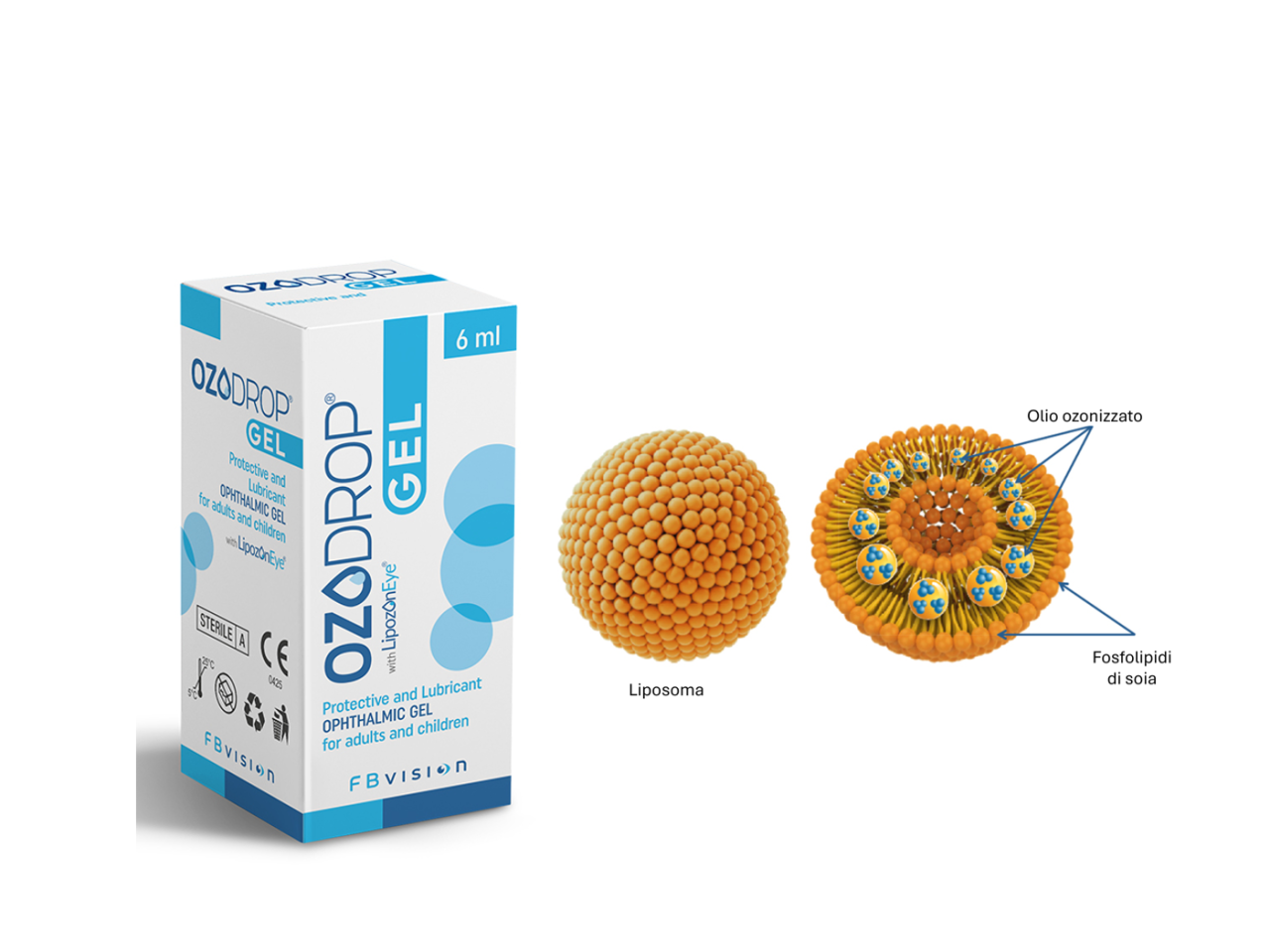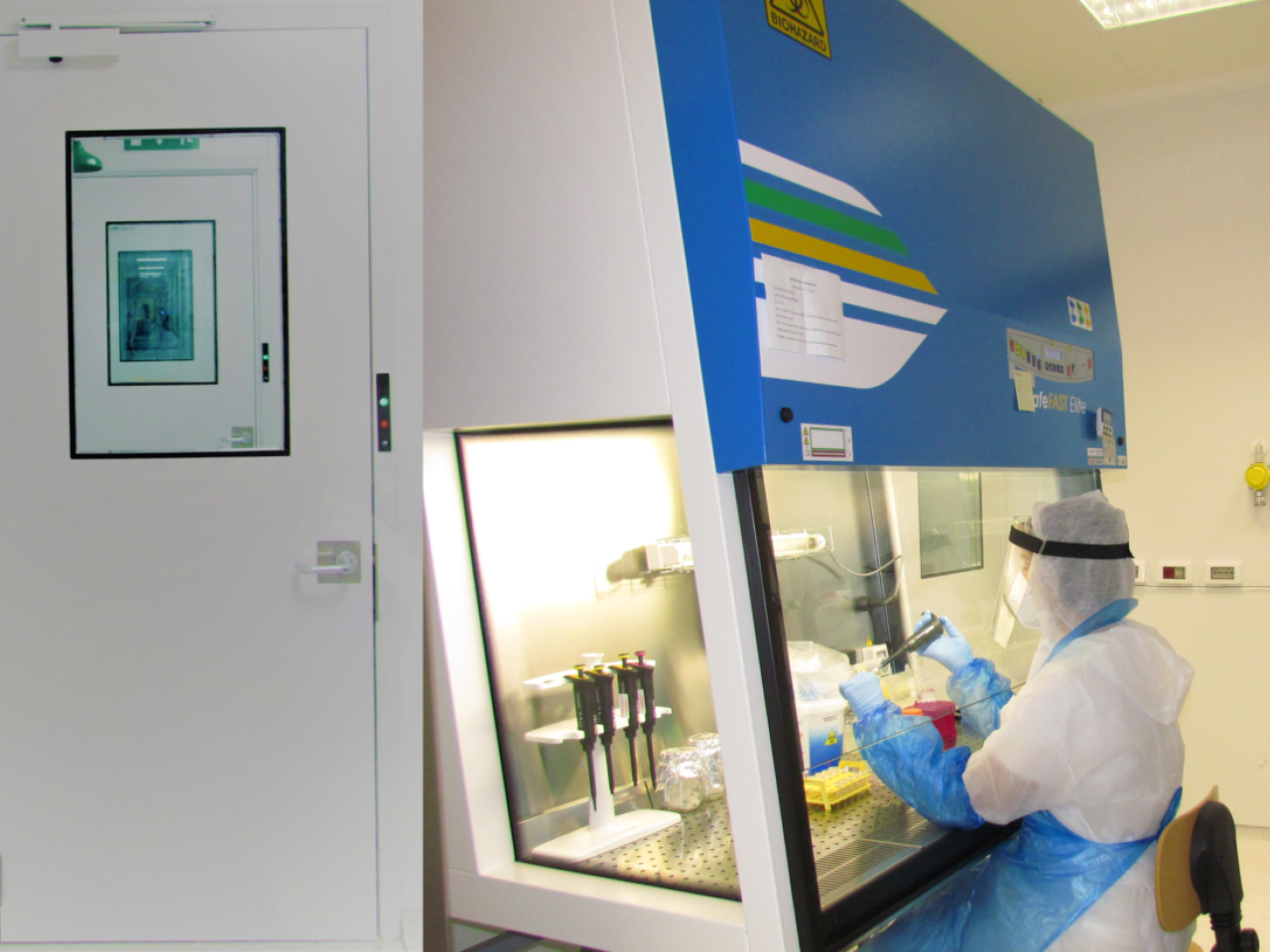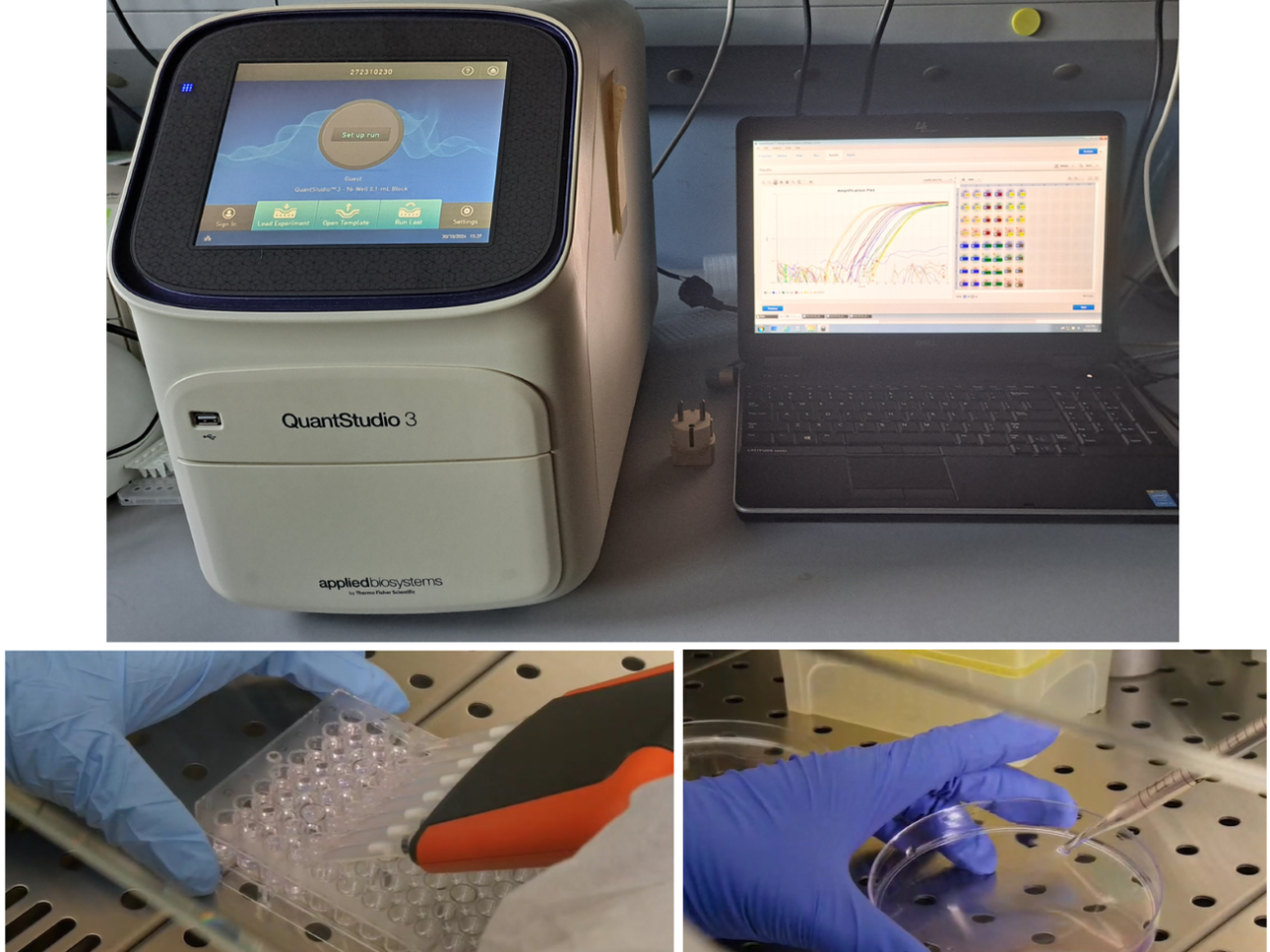It is known that SARS-CoV-2 virus can enter the body also through the eyes, especially in individuals suffering from dry eye syndrome. In these individuals, the virus initially causes conjunctivitis, which may potentially progress to the typical COVID-19 pneumonia via nasolacrimal drainage. A liposomal ozonated oil-based ophthalmic gel may act as a barrier against viral entry through the eyes. To evaluate this activity, an in vitro study can be conducted by treating human corneal cells infected with active SARS-CoV-2 strains with the formulation. The technologies available in the high-containment BSL-3 laboratory at LTTA enable the evaluation of the antiviral effects of various actives or formulations on specific target cells, such as corneal epithelial cells in the current study. Pharmaceutical companies or manufacturers of active ingredients can leverage this service to conduct preclinical studies in the early stages of development.
 Fig.1: Ozonated oil encapsulated in liposomes within the ophthalmic gel formulation Ozodrop®
Fig.1: Ozonated oil encapsulated in liposomes within the ophthalmic gel formulation Ozodrop®
In the BSL-3 facility, it is possible to safely handle class 3 microorganisms, as classified according to their risk level. This includes handling SARS-CoV-2, along with other risk group 3 microorganisms such as the West Nile Virus. The BSL-3 laboratory’s preclinical research service has adopted in vitro approaches to evaluate the antiviral activity of formulations and active ingredients. Various cell lines are used in these studies, accurately simulating in vivo infection conditions. The evaluation includes the quantitation of viral particles after the treatment with the test compounds, which involves both quantitative molecular assays, those give the reduction in the total number of viral particles, and a viral titration on target cells, that calculates the decrease of infectious viruses only. Molecular analyses can also be conducted in parallel to observe cellular effects of the treatment, thereby providing a comprehensive understanding of antiviral mechanisms. With high-quality service and advanced technologies, the BSL-3 laboratory represents a unique environment for developing innovative therapies, targeted at pharmaceutical companies and active ingredient producers that require reliable preclinical studies in the early stages of development. Moreover, it enhances the potential for future personalized applications, adapting treatments to different viral strains or host immune responses.
The assays developed in the BSL-3 laboratory are at the forefront of antiviral research, thanks to the integration of advanced cell biology and molecular virology assays. Cytotoxicity testing of substances is also conducted in the laboratory, a crucial aspect in drug development, helping to find the right balance between effectiveness and safety. This combination of techniques enables not only testing for viral load reduction but also monitoring the effects of treatments on host cells at molecular level. Unlike traditional assays, these in vitro models incorporate multiple cell lines and infection conditions that closely mimic real-life ocular transmission routes, making the findings more relevant for clinical translation. The present study applied these in vitro protocols to assess the antiviral properties of the Ozodrop® ophthalmic gel against SARS-CoV-2. The analysis conducted has led to innovations in the ophthalmic application of liposomal ozonated oil in ocular prophylaxis, opening new perspectives for the development of novel formulations to extend the clinical potential of the technologies developed.
The reliability of these in vitro systems enables preliminary screening of the antiviral properties of new compounds and formulations, allowing for a more targeted approach to the next level in vivo and human trials. These tests are particularly useful for companies interested in evaluating the antiviral activity of substances intended for preventive use, as well as therapeutic agents for treating ongoing infections. Molecular and proteomic analyses also allow for exploration of potential mechanisms of action and assessment of the effects induced by these substances on target cells.
 Fig.2: detail of the BSL-3 high containment laboratory, located inside the LTTA.
Fig.2: detail of the BSL-3 high containment laboratory, located inside the LTTA.
A study on the protective effects of an innovative ophthalmic gel on human corneal cells infected with SARS-CoV-2. The experiment integrated molecular virology with cell biology to assess the product’s tolerability in addition to its antiviral potential.
To assess the efficacy and antiviral activity of the ophthalmic gel, the experiments were divided into different phases:
Tolerability Analysis of Ozodrop® on Human Corneal Cells: The gel was applied at different concentrations to treat HCE-2 cells for up to 72 hours. Cell viability was assessed using a colorimetric assay and compared with untreated cells.
Regenerative Activity Analysis of Ozodrop® through In Vitro Scratch Test and Ex Vivo Corneal Treatment: Efficacy was evaluated after 24 hours of treatment using microscopy and analysis of inflammatory cytokines.
Antiviral Activity Analysis: A SARS-CoV-2 strain propagated in the BSL-3 lab was used to infect the cells. Following infection, the cells were treated with Ozodrop® for 24, 48, and 72 hours. Viral load was quantified by rt-qPCR, both inside the cells (after lysis) and in the culture medium.
The results showed that the ophthalmic gel has regenerative properties on mechanically damaged cell monolayers and anti-inflammatory effects under ex vivo dry eye conditions. Additionally, it demonstrated antiviral activity, with a reduction in SARS-CoV-2 titer by nearly 4 logs after 72 hours of treatment with Ozodrop®.
FB Vision S. p. A.
The service has been enhanced by user loyalty with LTTA and by the publication of an article in an internationally relevant scientific journal. The results on the ophthalmic gel have further elevated the value of Ozodrop®, which is currently available on the market.
 Fig.3: top, real-time PCR QuantStudio3 for quantification of viral genomes and analysis of the expression of cellular markers; bottom, details of cell manipulation.
Fig.3: top, real-time PCR QuantStudio3 for quantification of viral genomes and analysis of the expression of cellular markers; bottom, details of cell manipulation.

